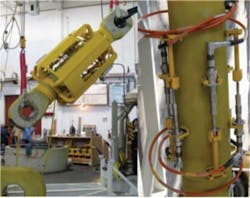Seismic vessel count regains numbers
Gene Kliewer
Technology Editor, Subsea & Seismic
Offshore’s seismic vessel survey for 2011 shows both new vessels and some additional players. These combine to push the total number of these vessels higher than in 2010. The tally of vessels on the following table is 163. This compares to 156 in 2010. This increase of seven also counts of newbuilds contracted for delivery but not yet in service.
The new vessels show a built-for-purpose trend in that many are being specified and outfitted for particular types of surveys such as 4D and ocean-bottom node applications.
While the onshore excitement surrounding tight gas and shale plays has shifted some of geophysical attention away from offshore, there remain indications of some significant trends in subsea survey technology. When some of these will become broadly operational is anyone’s guess, but the industry has a way of accelerating when the price is right.
These trends take two directions: One is the traditional hardware and processing advances year over year. The other involves a completely new approach to geology and geophysics.
Some recent hardware and field-oriented advances already are in practice. Methods of running surveys such as WesternGeco’s coil vessel track are out of the trial phase and making an impact in everyday work. OBC and 4D are in the mainstream now. Visualization in three dimensions is no longer a novelty. Processing power continues to increase and also to become desktop friendly.
However, with the capex risks of deep wells in deepwater, or even in shallow water, the pressure on getting better data from the field is not going to lessen. No matter the size of the company, a $100 million dry hole is bad news. Therefore, the research and development into getting more and better data from the field will result in important changes.
Getting all the value out of more and better data depends upon processing power and algorithms perceptive enough to interpret that data. Once interpreted, the results have to be presented in a useful manner. All these areas are seeing technological leaps. Better survey methods generate more data. More data requires more processing power. Greater processing power begets more sophisticated interpretive programs. New methods of interpretation generate new methods of data visualization. When all the available data is mined completely, ways to acquire even larger data sets evolve. The system goes in a circle to impel the business of geology and geophysics.
Over recent years, the trend has been for new developments offshore to be adapted for onshore use. Now, with the emphasis of onshore development, some of that technology may be expected to trickle down to offshore operations.
One example area is sensors. More sensors gather more data. Shell and HP are working onshore to test a very small sensor that is not only cheaper to manufacture, but because of its size and sensitivity is less expense to place and retrieve. Therefore, more of them can be used without an equivalent jump in the cost of a survey. The adaptation needed to take these sensors offshore should be minimal.
New vessels
BGP is not new to the Seismic Vessel Survey. However, the company is taking a more active approach to providing surveys. TheBGP Explorer is done with its conversion at Tanggu, China, and is equipped for 2D and small 3D surveys towing one to four streamers. BGP is playing off its experience in shallow waters, undershooting, and severe environments.
The Bergen Group has moved ahead on a rebuild of theGeowave Master at a cost of about NOK 170 million ($29 million).
Orogenic GeoExpro has taken delivery of theGenesis from Trinity Offshore based on a charter through 3Q 2011. The vessel equipment includes analog geophysical and 2D HR digital seismic equipment.
Polarcus Ltd. continues to add to its vessel fleet with delivery in 1Q 2011 of theSamur. The vessel is expected to be at work for the first time this month. The Alima began sea trials early this year and delivery is imminent. Polarcus has an option on an eight-streamer vessel to exercise in 2Q 2011.
Spectrum joins the list for the first time this year with delivery of theGGS Atlantic for long-offset 2D and small footprint 3D.
To meet the objectives of its management plan, CGGVeritas has simplified its organization to move closer to its clients and to focus on operations and technology differentiation. The new CGGVeritas organization is based around five divisions, Equipment, Marine, Land, Processing Imaging & Reservoir, Multi-Client, and a global Sales, Marketing and Geomarket network.
The equipment initiative is to further advance Sercel through innovation, increased research and development, and expanded manufacturing knowhow.
The Marine plan focuses on a new series of initiatives to better use its maritime assets. The plan focuses on repositioning and upgrade of the fleet to provide the most advanced seismic technology where the market wants it. It also includes progressing BroadSeis in the market.
To continue to strengthen its data library CGGVeritas aims at a better geographic balance of its multi-client investments.
On the business side, more consolidation is not out of the question. Spectrum USA sets the stage when it says it is looking for signs of consistency in the acquisition market. Right now, it seems the M&A business as nervous and affected by other tertiary indices more than seen in the past. Spectrum, as are other seismic companies, actively pursues all appropriate acquisition projects.
Click here to viewWorldwide Seismic Vessel Survey
Offshore Articles Archives
View Oil and Gas Articles on PennEnergy.com


